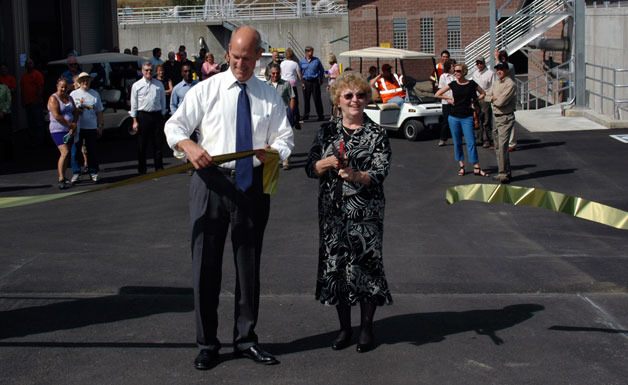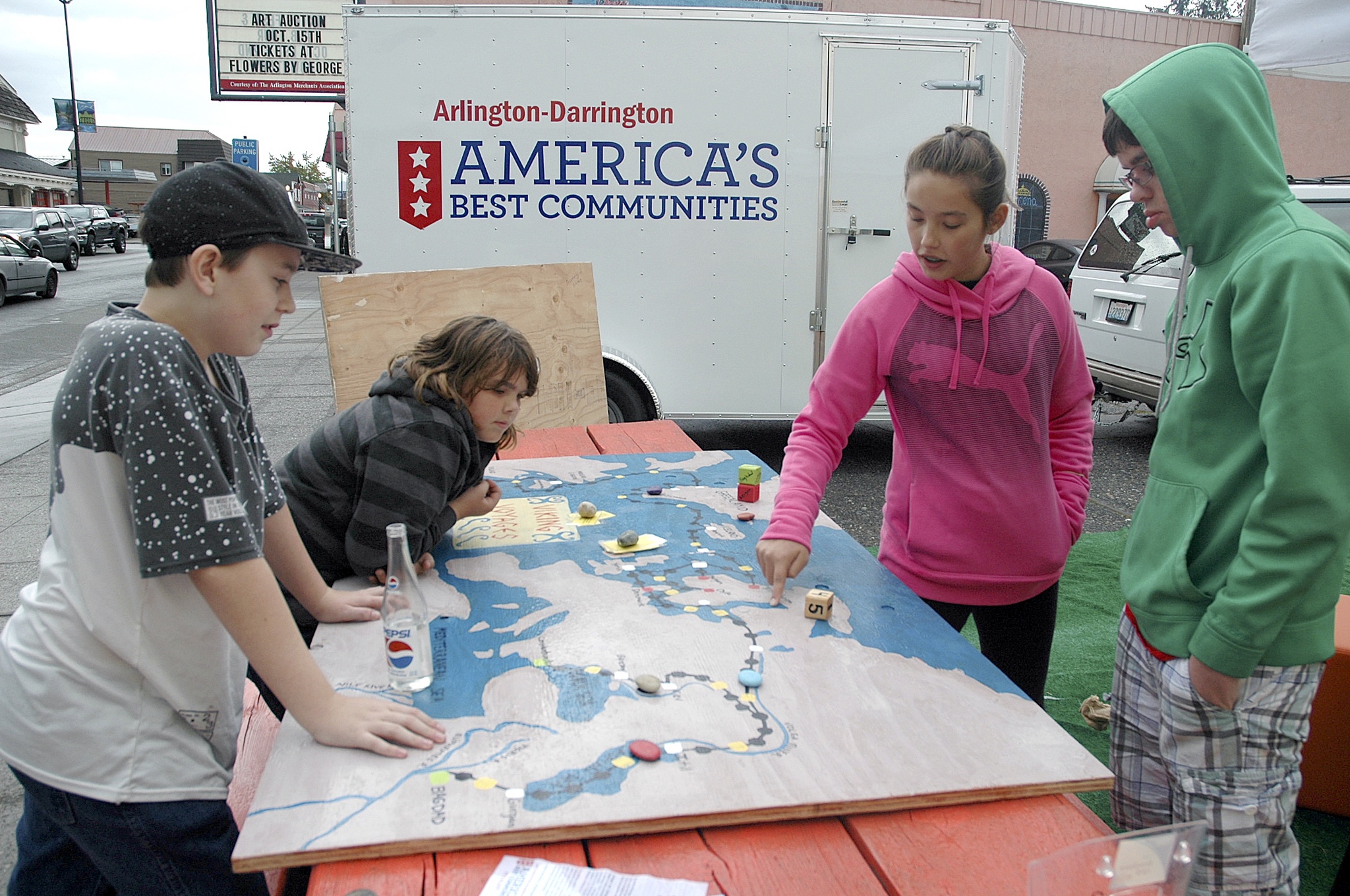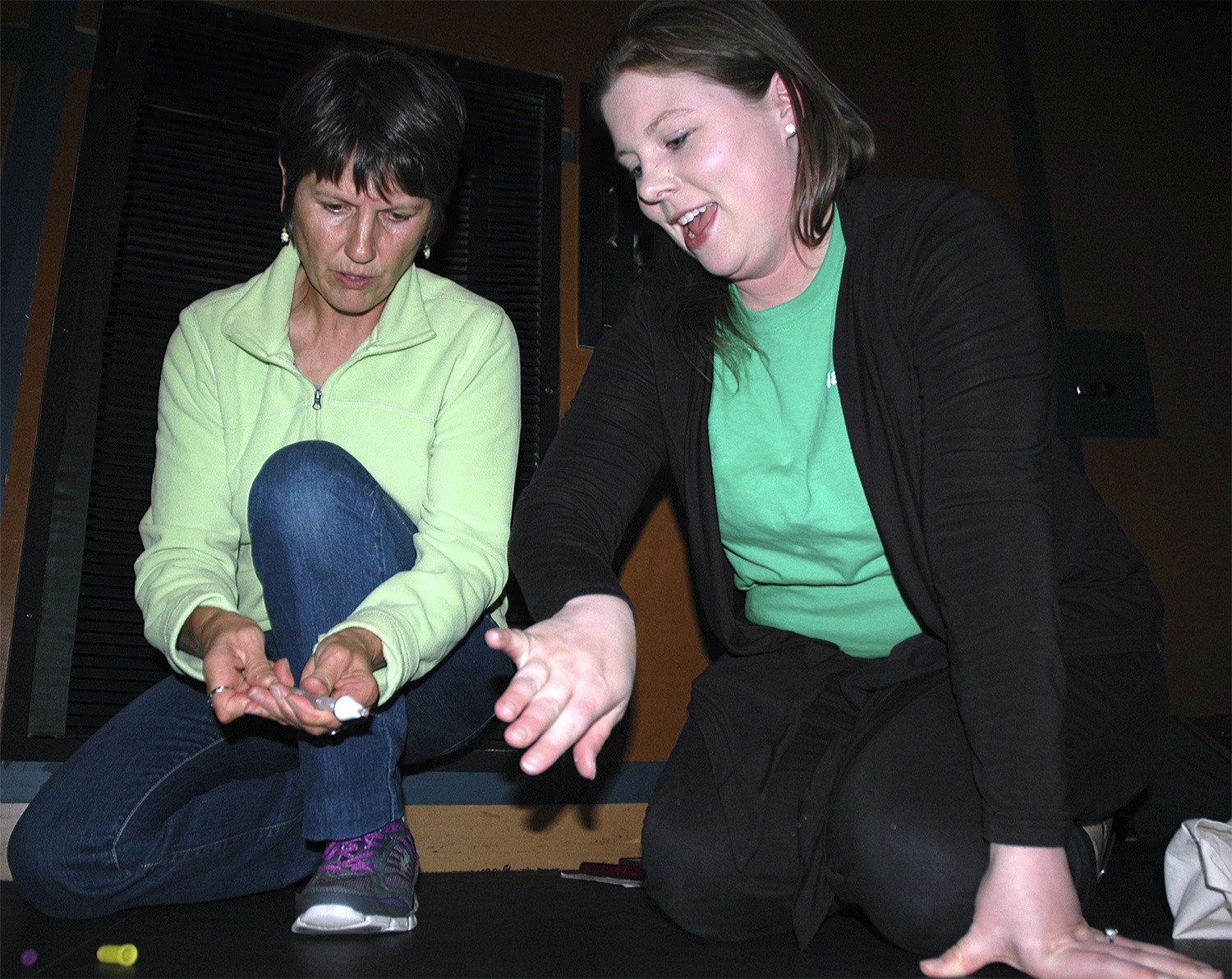MARYSVILLE — A joint appearance by Arlington Mayor Margaret Larson and U.S. Rep. Rick Larsen was merely the midpoint of a day of public tours dedicating the city of Arlington’s wastewater treatment plant and stormwater wetland on Aug. 24.
City of Arlington Public Works Director Jim Kelly not only conducted several of the tours himself, but also emceed the dedication ceremony that concluded with Larson and Larsen cutting a ceremonial ribbon in front of the plant. Kelly explained that the road toward the stormwater wetland began in earnest in 2000, in the wake of the Butler/Hammer farmland purchase, while the wastewater treatment plant upgrade and expansion was initially in response to permit violations.
“We worked with the state Department of Ecology and a number of engineers and architects to repair the plant,” Kelly said. “Our first wastewater treatment plant was built in 1959, and now, 52 years later, we’re producing cleaner water than what people in many parts of the world drink.”
Not only is the $35 million plant built to accommodate the increased capacity required by future growth in the area, but it’s also intended to turn the Stillaguamish River and Puget Sound as a whole into cleaner bodies of water. Kelly attributed the support of elected leaders, low-interest loans from the state DOE and the Public Works Trust Fund, and federal stimulus funds with making this project possible.
“This is a wonderful project that showcases a great collaborative effort with [the Department of] Ecology,” said Terry Dale of the Public Works Trust Fund Board.
“The ecological benefits of wastewater and stormwater treatment are an outstanding combination,” said Jeff Nejedly of the Washington Department of Ecology Clean Water State Revolving Fund. “Kudos to this staff for being able to meet the additional requirements of the American Recovery Act. I’ve known folks who have said that they’d never want that money again,” he laughed.
Larson praised Arlington city staff and officials who played parts in this project, from City Council members such as Marilyn Oertle and Dick Butner, the latter of whom chaired the Utilities Committee, to City Administrator Allen Johnson, whom she described as “the glue” holding it together.
“As I said to Dick, look how far we’ve come,” Larson said. “We’re ready for future growth, we’re returning clean water to the Stilly River, and we did it on time and under budget which shows that miracles do happen. Projects like this will make this a community where our children’s children can live, work and play, and will serve as an example to future generations.”
Margaret Larson credited Rick Larsen with helping secure more than $400,000 in “forgivable loans” for the project, essentially making them grant monies.
“If I’d known how dirty the Stillaguamish River was in my day, I might not have gone swimming in it,” Larsen said, drawing laughter from the audience. “This project meant 60 family-wage jobs, not including the work that went to local suppliers, contractors and subcontractors. All that and we’re cleaning up the mighty Stilly.”
While the wastewater treatment plant is complete except for “punch-line items” according to Kelly, the stormwater wetland is still in progress, with planting currently scheduled for the fall. City of Arlington Natural Resources Director Bill Blake anticipates that the wetland will become both a recreation area and a wildlife refuge.







